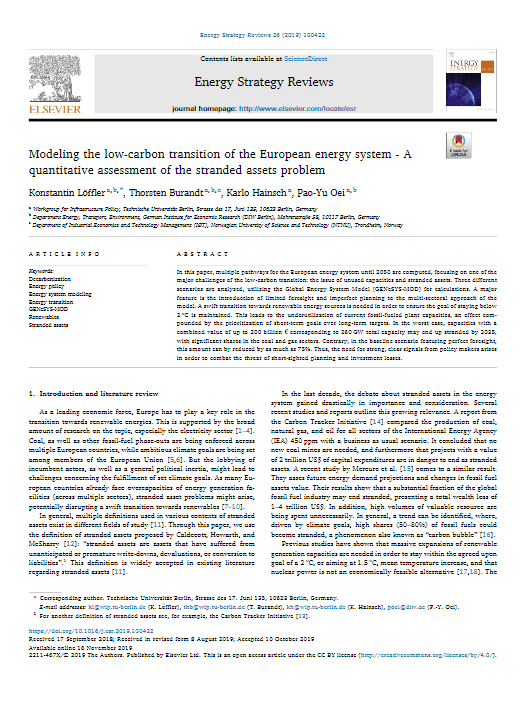Modeling the low-carbon transition of the European energy system

In this paper, multiple pathways for the European energy system until 2050 are computed, focusing on one of the major challenges of the low-carbon transition: the issue of unused capacities and stranded assets. Three different scenarios are analyzed, utilizing the Global Energy System Model (GENeSYS-MOD) for calculations. A major feature is the introduction of limited foresight and imperfect planning to the multi-sectoral approach of the model. A swift transition towards renewable energy sources is needed in order to ensure the goal of staying below 2 °C is maintained. This leads to the underutilization of current fossil-fueled plant capacities, an effect compounded by the prioritization of short-term goals over long-term targets. In the worst case, capacities with a combined value of up to 200 billion € corresponding to 260 GW total capacity may end up stranded by 2035, with significant shares in the coal and gas sectors. Contrary, in the baseline scenario featuring perfect foresight, this amount can by reduced by as much as 75%. Thus, the need for strong, clear signals from policy makers arises in order to combat the threat of short-sighted planning and investment losses.